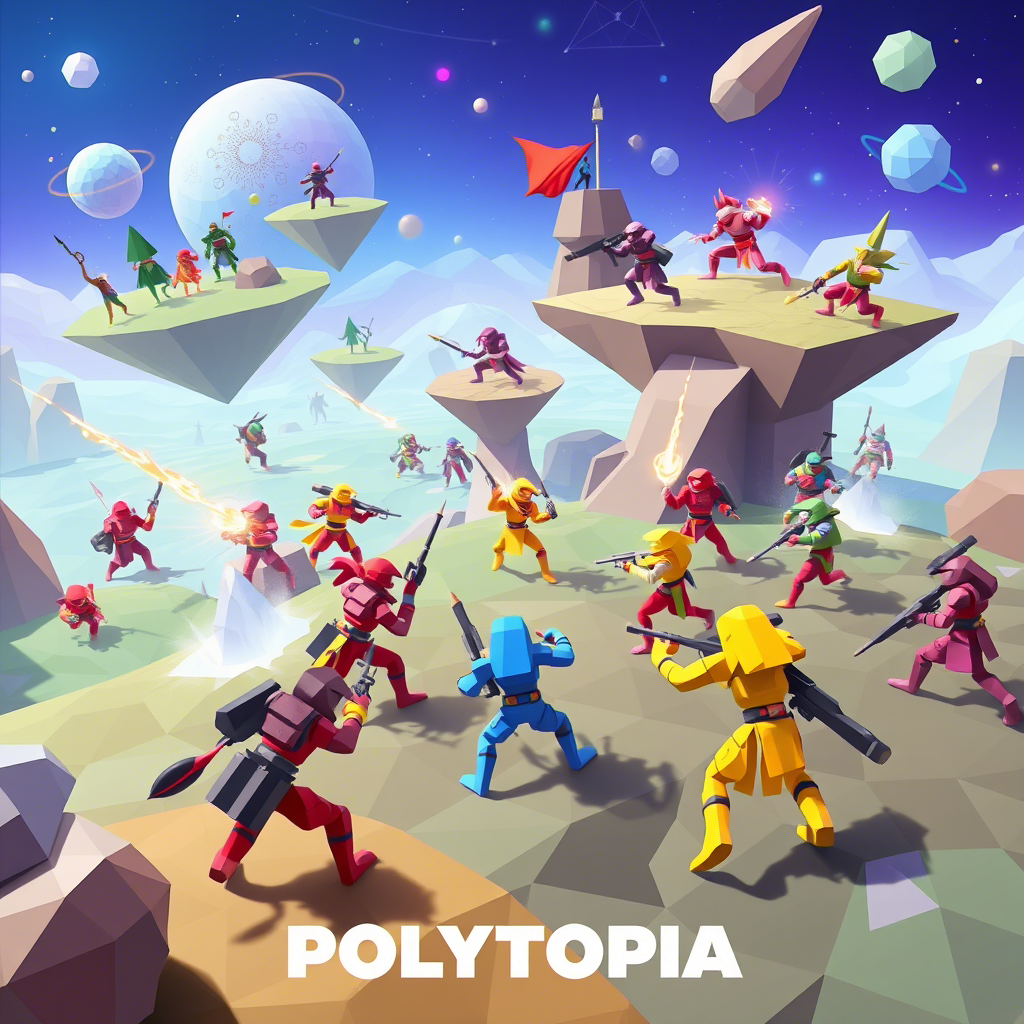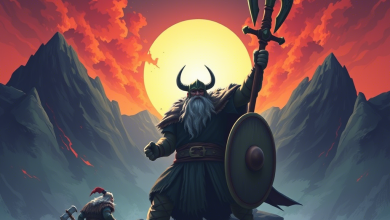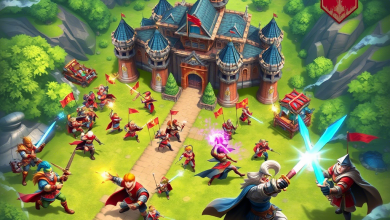
The Battle of Polytopia: Strategy, Tribes, and Tactics for Conquering the Square
In the vast landscape of mobile strategy games, The Battle of Polytopia stands out as a gem that combines accessibility with surprising depth. This turn-based civilization strategy game has captured the hearts of millions with its distinctive low-poly art style, intuitive gameplay, and perfect balance between simplicity and strategic complexity. Whether you’re a newcomer to the Square or a seasoned chief looking to refine your tactics, this guide will help you understand what makes Polytopia special and how to master its unique challenges.
What Is The Battle of Polytopia?
The Battle of Polytopia, developed by Swedish game studio Midjiwan AB, is a turn-based strategy game that distills the 4X genre (eXplore, eXpand, eXploit, eXterminate) into a streamlined experience playable in short sessions. Released in 2016, the game has evolved significantly through updates while maintaining its core identity.
Unlike sprawling strategy games that can take dozens of hours to complete, Polytopia matches can be finished in 30 minutes or less, making it perfect for mobile gaming. Players choose from various tribes, each with unique starting technologies and abilities, and compete to build the highest-scoring civilization within a set number of turns or eliminate all opponents from the square-shaped world.
The game’s distinctive low-poly aesthetic isn’t just visually appealing—it’s functional, allowing for clear visual communication of game elements even on small screens. This design philosophy extends to every aspect of Polytopia, creating an experience that’s accessible without sacrificing strategic depth.
Game Modes and Objectives
Polytopia offers several ways to play, each catering to different strategic preferences:
Perfection Mode
In Perfection mode, players have 30 turns to build the highest-scoring civilization possible. This mode emphasizes efficient expansion, technology development, and city growth rather than pure military domination. Success in Perfection requires balancing short-term gains against long-term investments in technology and infrastructure.
Points come from:
- City levels and populations
- Technologies researched
- Units created
- Enemy cities captured
- Monuments built
Perfection mode rewards planning and economic strategy, challenging players to maximize their civilization’s potential within tight constraints.
Domination Mode
For players who prefer conquest, Domination mode tasks you with being the last tribe standing by eliminating all opponents. With no turn limit, Domination matches can become epic struggles for supremacy where military tactics and strategic positioning often determine the victor.
Successful Domination requires:
- Aggressive early expansion
- Securing resource-rich territories
- Building efficient military production
- Strategic timing of technological advances
- Careful unit management and positioning
The difference between victory and defeat often comes down to choosing the right moment to strike while maintaining enough defensive capability to protect your cities.
Creative Mode
For those who prefer a sandbox experience, Creative mode allows players to experiment freely without the pressure of competition. This mode is perfect for learning game mechanics, testing different strategies, or simply building a beautiful Polytopian world.
Tribes of Polytopia: Choosing Your Civilization
One of Polytopia’s most engaging features is its diverse collection of tribes, each with distinctive aesthetics, starting technologies, and sometimes special abilities. Your choice of tribe can significantly influence your strategy and playstyle.
Free Tribes
The game offers several free tribes for new players:
Xin-xi: Inspired by East Asian cultures, Xin-xi starts with Climbing technology, allowing early mountain exploration. This tribe thrives in mountainous terrain but may struggle with early economic development.
Imperius: With Roman influences, Imperius begins with Organization technology, helping them grow cities quickly. Their balanced starting terrain makes them excellent for beginners.
Bardur: This Nordic-inspired tribe starts with Hunting technology and typically spawns in forests rich with game. Their early resource advantage can fuel rapid expansion.
Oumaji: A desert tribe with Riding technology, Oumaji excels at early exploration and claiming territory quickly with their starting riders.
Special Tribes
For players seeking more variety, Polytopia offers premium tribes with unique abilities:
Aquarion: Masters of the sea who can train special amphibious units.
Elyrion: A mystical tribe that can enchant animals instead of hunting them and grow magical creatures.
Polaris: Ice-wielders who transform the landscape as they expand, changing terrain to their advantage.
Cymanti: Insect-like beings who use unique biological units and fungal infrastructure.
Each tribe’s starting technology and terrain influence optimal opening strategies, making tribe selection an important first decision in any match.
Core Gameplay Mechanics
Understanding Polytopia’s core systems is essential for developing winning strategies:
Resource Management
The game’s primary resources include:
- Stars: The economic currency used for nearly everything
- Population: Determines city level and star production
- Resources: Land-based assets that increase population when harvested
Effective resource management involves choosing when to harvest resources for immediate population growth versus preserving them for technologies like Forestry or Whaling that can yield greater returns later.
Technology Tree
Polytopia’s technology system is streamlined compared to other strategy games but still offers meaningful choices. Technologies unlock new units, buildings, and abilities, with some providing immediate benefits while others enable long-term advantages.
Key technology strategies include:
- Rushing specific military technologies for early aggression
- Prioritizing economic technologies for stronger mid-game
- Unlocking naval technologies when playing on water-heavy maps
- Balancing specialized techs with broad advancement
The relatively small tech tree makes each choice significant, requiring players to commit to specific strategies rather than researching everything.
Combat System
Combat in Polytopia uses a straightforward system where units have attack and defense values, with terrain and positioning providing modifiers. Despite this simplicity, battle outcomes can be quite nuanced:
- Units gain attack bonuses when adjacent to friendly units
- Defenders receive bonuses from terrain like mountains and city walls
- Certain units counter others effectively (riders against archers, knights against catapults)
- Veterans gain increased health through successful battles
Mastering combat requires understanding these interactions and planning several moves ahead to ensure favorable engagements.
Advanced Strategies for Victory
As you become more familiar with Polytopia’s mechanics, these advanced strategies can help elevate your gameplay:
Early Game Priorities
The first 5-10 turns often determine the trajectory of your game. Focus on:
- Exploring to find resources and ruins
- Meeting other tribes for early trade opportunities
- Securing borders with strategic unit placement
- Developing your capital city to level 3 quickly
Economy vs. Military Balance
Finding the right balance between economic development and military strength is crucial. Overinvesting in either can leave you vulnerable:
- Too military-focused: You may fall behind in technology and city development
- Too economy-focused: You risk being overwhelmed by aggressive neighbors
The optimal balance shifts as the game progresses, with economic investment generally yielding greater returns in early turns.
Advanced Unit Tactics
Beyond basic combat, consider these tactical approaches:
- Creating chokepoints with defensive units
- Using scouts and riders for harassment and intelligence
- Developing naval forces to bypass land defenses
- Leveraging giants for breaking defensive positions
Conclusion
The Battle of Polytopia achieves something remarkable in the strategy genre—it distills complex 4X gameplay into an accessible format without losing strategic depth. Its combination of distinctive visual style, intuitive design, and balanced gameplay makes it appealing to both casual players and strategy enthusiasts.
Whether you’re playing quick matches during a commute or engaging in epic multiplayer battles against friends, Polytopia offers a rich strategic experience that continues to evolve with regular updates and new content. By understanding the fundamental mechanics and tribal differences, you’ll be well-equipped to expand your square empire and claim victory in this delightful digital world.




